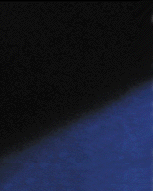|
|
 |
| This Month | Seoul in Breif | Specific Maps of Seoul | |||
| Where to Stay | What to Eat | What to Do | What to See | What to Buy | What to Know |
| Home >> Art & Craft >> Hanbok (Traditional cloth) |
| |||
Hanbok, the traditional dress, harmonizes very straight lines and curves. Wearing this, one¡¯s appearance will be like a moon figure; most modest, expressing the special spirit of Korea. Other remarkable qualities of Hanbok its form, composition, beauty, texture, and hygienic aspect. Although it is made from up to 18 meters of fabric, it is light weight and easy to put on. For this reason, most Koreans like to wear Hanbok for special days, festival days, or wedding ceremony days - even today. Nothing would be a better reminder of your visit to Korea than an elegant Korean Hanbok. Beauty of Hanbok To make Hanbok, the cloth should be cut out straight and sewed, then creased or with string to adjust to the individual¡¯s body. It is comprised of two parts, a short jacket for women and a longer jacket for men. Womens¡¯ Hanbok has a long full skirt, while men wear loose trousers. The most special thing is that it has a very plane shape when laid out flat, but when worn the Hanbok takes on the soft curves and lines of the human form. Another fact that makes it more beautiful is the line and the colors. The line has a linear beauty through an exquisite harmony of the straight and curved. It has an excellent aesthetic sense including a kinetic beauty when worn and moving. The color has it¡¯s basis in white. Koreans are known as people in white clothes, and they believe it brings good relationships, from ancient times. Embroidered figures of flowers, red-crowned cranes, or geometrical things add to the gorgeiousness of Hanbok. Formality and Hanbok Hanbok should be chosen for the right season, age, time, and place. In ancient times the style and color of one¡¯s Hanbok was determined by social rank and marital status. It is preferable to have more than one color is a Hanbok because the harmony of the colors stands for order and reconciliation. It is also said that different colors produce differing moods and feelings. Therefore, the morality of Korean life is reflected in the way right clothing is believed to promote the right attitude. Accessories for Hanbok The Binyeo, which is used for holding the hair up and fastens at the back, most matches women wearing Hanbok. Binyeo plays an important part in decoration. Thus, materials such as gold, silver, wood, white-copper, coral, and jade have been used for making it. In times past its material and length also indicated the social standing. Binyeo is made with a bulky head and a long thin body. Woman in Royal families used engraved Binyeo with dragons or phoenix figures, and for the commoner it was carved with wood and flower figures, bamboo or apricot flowers. A chignon accessory called Deokkoji, that was used to adorn hair with Binyeo, is also an accessory to make Hanbok look better. Norigae, one of the accessories for Hanbok, unlike the others, is generally used until this time. It should be worn on the bust line and distinguished for its delicate outward and gay knotted ornament. Moreover it contains many meanings - especially getting rich, giving birth to boys and not getting any older. Norigae, that is decorated with embroidery of gold, silver, jewels and a knot, has been deemed as an adornment. In addition to these, when wearing Hanbok, people wear big socks and rubber shoes. Only women wear flower embroidered shoes which vivify the hem of their skirt. |
 |
| Copyright ¨Ï 2001 What's On Communications Inc. All rights reserved. Write to Us post@whatsonkorea.com. |